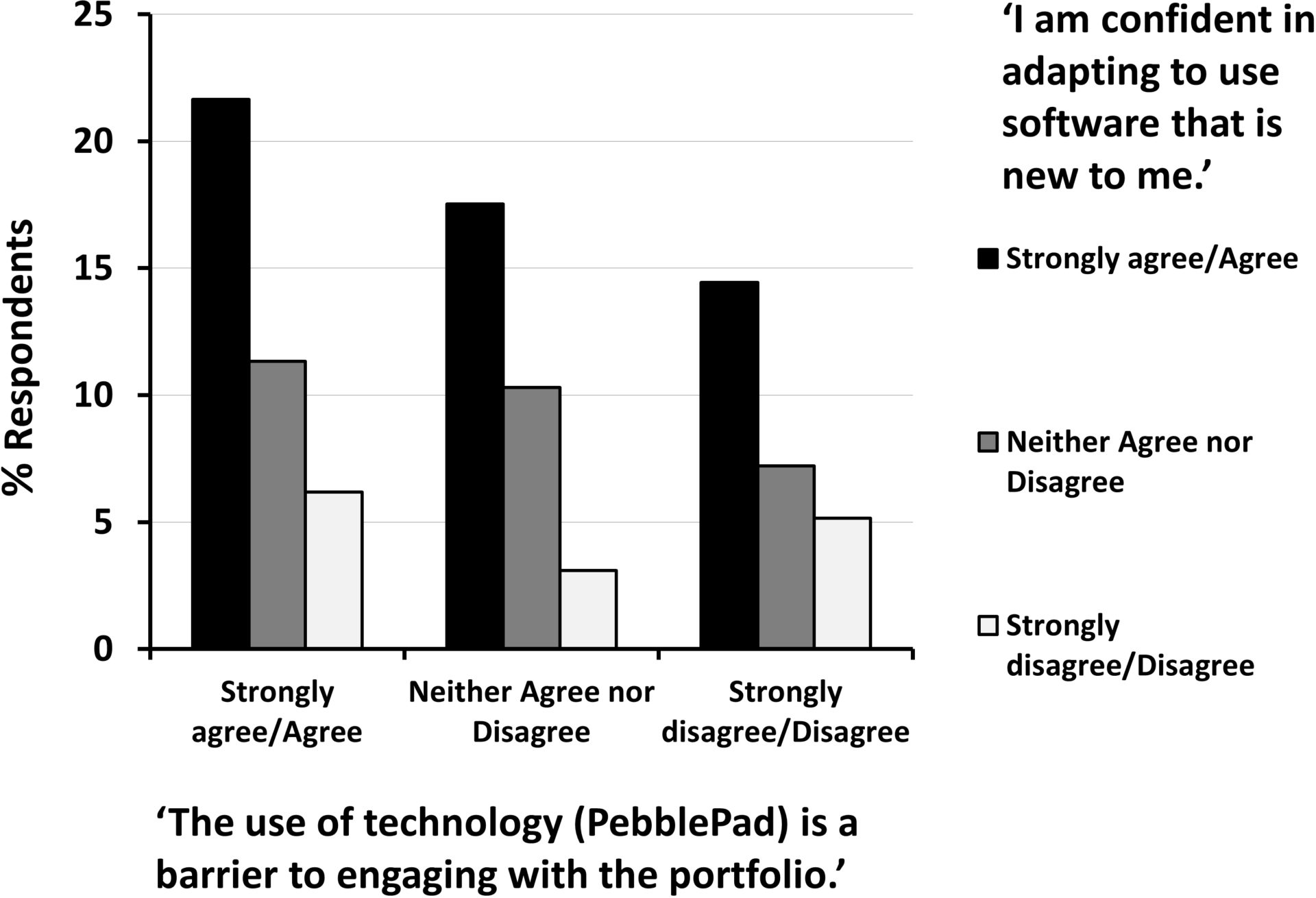Portfolios allow staff/students to reflect upon their personal and professional development and to monitor their skill-set. The University of Bradford recently adapted the personal and professional development portfolio for Clinical Sciences Foundation students from a word document into an online assessment utilising PebblePad software. The portfolio assessed students on a number of tasks, including: a self-assessed skills audit; reflection upon prior and current learning; SMART action plans, to identify barriers to learning and implementing strategies to overcome them; communication via a blog and the development of a plan to improve presentation skills; and also students’ ability to respond to feedback. The role of the personal tutor was to provide guidance during meetings and both oral and written feedback. We utilised the recent change to an online format to investigate whether technology is a barrier to students’ engagement with the portfolio. Two weeks prior to portfolio submission, students were surveyed with 20 questions to identify characteristics regarding background, use of computer applications and engagement with the portfolio. Responses to the survey were anonymous and ethics approval was granted by the Chair of the Biomedical, Natural, Physical and Health Sciences Research Ethics Panel at the University of Bradford. 97 out of 188 students responded to the survey. Of these, 78% identified as British/British with dual nationality. 51% identified as Asian, 19% as Caucasian, 17% as black, and 5% as mixed/multiple ethnic groups. The demographic of students surveyed is dissimilar to the national enrolment statistics in Higher Education in the UK (77% White, 10% Asian, 7% Black, 5% Other in 2016-7)[1]. Most students agreed or strongly agreed that they had engaged with the portfolio (75:12:11, % strongly agreed/agreed: neither agreed nor disagreed: disagreed/strongly disagreed). The majority of students agreed that they were: confident in using MS Word (94:5:1); MS Excel (64:18:20); would prefer to use computer/tablet-based applications to undertake academic work (57:29:14); and perceived themselves as confident in adapting to software that was new to them (55:29:16). Of the 40% students who considered PebblePad to be a barrier to portfolio engagement (40:31:27), over half were confident in adapting to new software (See Fig. 1) and/or had a preference for using a tablet/computer . These data demonstrate that students’ confidence in using new technologies is not representative of their perceptions of technology as a barrier to learning. However, engagement with the portfolio remained comparatively high. This study is limited by the single cohort surveyed; further study of multiple groups with different demographics may be beneficial.
Physiology 2019 (Aberdeen, UK) (2019) Proc Physiol Soc 43, C034
Oral Communications: Are learning technologies a barrier to education? – The results of a survey investigating engagement with an online development portfolio for bioscience students.
M. E. HARDY1, H. A. Khan1, S. Howells1
1. School of Pharmacy and Medical Sciences, University of Bradford, Bradford, United Kingdom.
View other abstracts by:
Fig. 1. Confidence in adapting to new technology vs. technology as a barrier to engagement. Student responses to a survey indicate that more than half those who consider themselves confident in adapting to use novel software, also consider the use of technology (Pebblepad) to be a barrier to engagement (n = 97).
Where applicable, experiments conform with Society ethical requirements.

